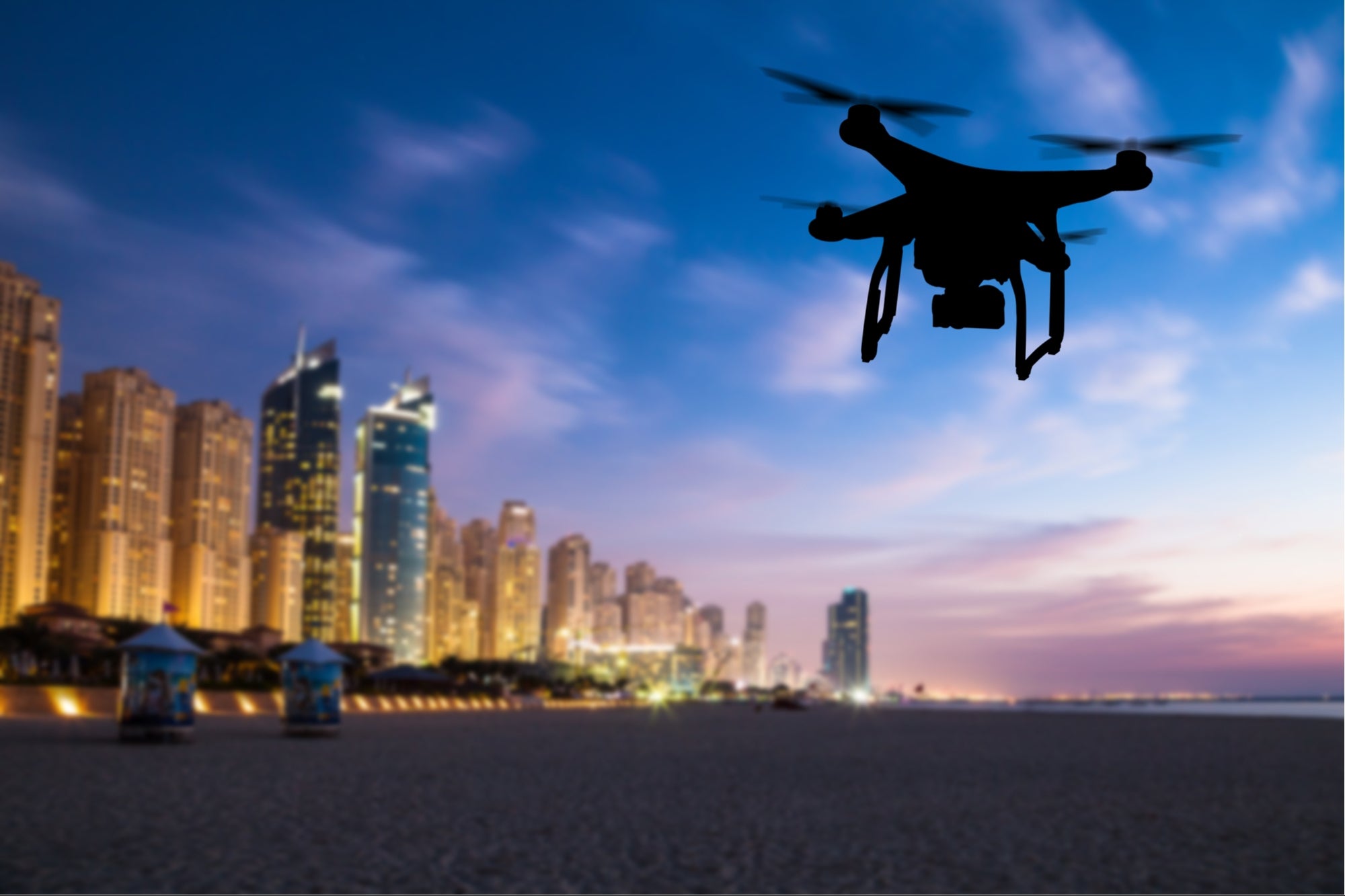Businesses in the real estate market are gearing up to speed up the process now that the government has eased covid-19 regulations. In the UAE’s real estate development sector, drones have been used in the construction process. In order to prepare for the ‘new normal,’ the latter is adding drone technology into its operations. This move was taken to allow them to continue operations while also protecting the health of their construction workers.
Falcon Eye Drones (FEDS), a major name in Middle Eastern drone and data technology, has partnered with Aerodyne Group. According to Mr. Rabih Bou Rashid, CEO of FEDS, it is critical for the construction industry to complete pending projects as rapidly as possible to make up for the time lost due to the COVID-19. Drones may be a suitable option for this purpose, not only because they ensure safe operations, but also because they are time and cost effective. This is one of the main reasons why more and more businesses are choosing drones over traditional construction methods.
According to statistics, using drone technology can cut site time waste by 18%. They can increase turnaround by 25% at the same time. Furthermore, as compared to physical labour, their accuracy, speed, and efficiency are superior. This demonstrates their importance in the UAE real estate development industry.
The UAE’s economic operations have been restored, and the country now plans to finish stalled projects and open new residential buildings. The country’s major organizations are now looking for efficient methods to adjust to this new normal while also considering the health and safety of their workforce. Obviously, if they are using the traditional (pre-COVID) construction procedure, obtaining this optimum level of efficiency and developing innovative solutions will be difficult.
Mr. Rashid believes that the usage of drone technology in the building industry can assist to prevent costly blunders. Managers may now identify issues they will face even during the pre-construction phase with the use of drones. Furthermore, they will be able to track progress both before and throughout construction. Workers’ safety can be improved by utilizing drone technology, as drones can be utilized at areas/sites where the risk of falling is higher.
Mr. Rashid feels that the construction industry can benefit from drone technology in the following areas:
Monitoring the Status of the Project:
He claims that deploying drones for progress monitoring can help construction companies save 11.8 percent on project value expenditures. Not only that, but the time it takes to put together the snag list will be reduced by 32%. Additionally, manual supervision is no longer required, as is the cost connected with it. Drones may undertake repeat flights to a specific location, reducing manual rework by 25%. The goal of these recurrent flights is to keep track on how things are going.
Drones have a reputation for providing precise data thanks to their high-resolution cameras. Managers can use this functionality to identify problems before they become costly and take corrective and preventive action as soon as possible. Managers might also plan ahead of time for solutions. As a result, extra costs incurred as a result of a project’s late completion can be decreased.
Inspection of the Site:
Aside from progress tracking, a site inspection is another application where drone technology might be beneficial. It is often seen as a hazardous stage. Drones, on the other hand, can help to decrease this risk to a large amount. Skyscrapers, soaring rooftops, and other hazardous and dangerous places no longer need to be surveyed by construction staff. In such situations, drones can be utilized to prevent workplace fatalities. Managers can watch footage of these dangerous places without having to visit them using drones.
Another big advantage of using drones in construction is that they can greatly minimize the workload. In terms of site inspection, examining a potentially dangerous region can take many days. It can, however, be done rapidly with the help of a drone. It also delivers data that is more precise and accurate.
Mapping of the Site:
It is common knowledge that mapping construction sites takes time. Not only does mapping a site take time, but it also takes a lot of resources. This process, on the other hand, can be accomplished quickly and effectively with drones. The activities are completed correctly, and the management has access to up-to-date data in a timely manner. This makes it easier to do a quick analysis. Drones are particularly beneficial for large-scale projects because of this capability. Previously, corporations took photos of the property with helicopters for mapping purposes. The helicopter was flown over locations just for the purpose of obtaining photos, which was a complete waste of resources. As previously indicated, this can now be accomplished without wasting any resources thanks to the use of a drone.




